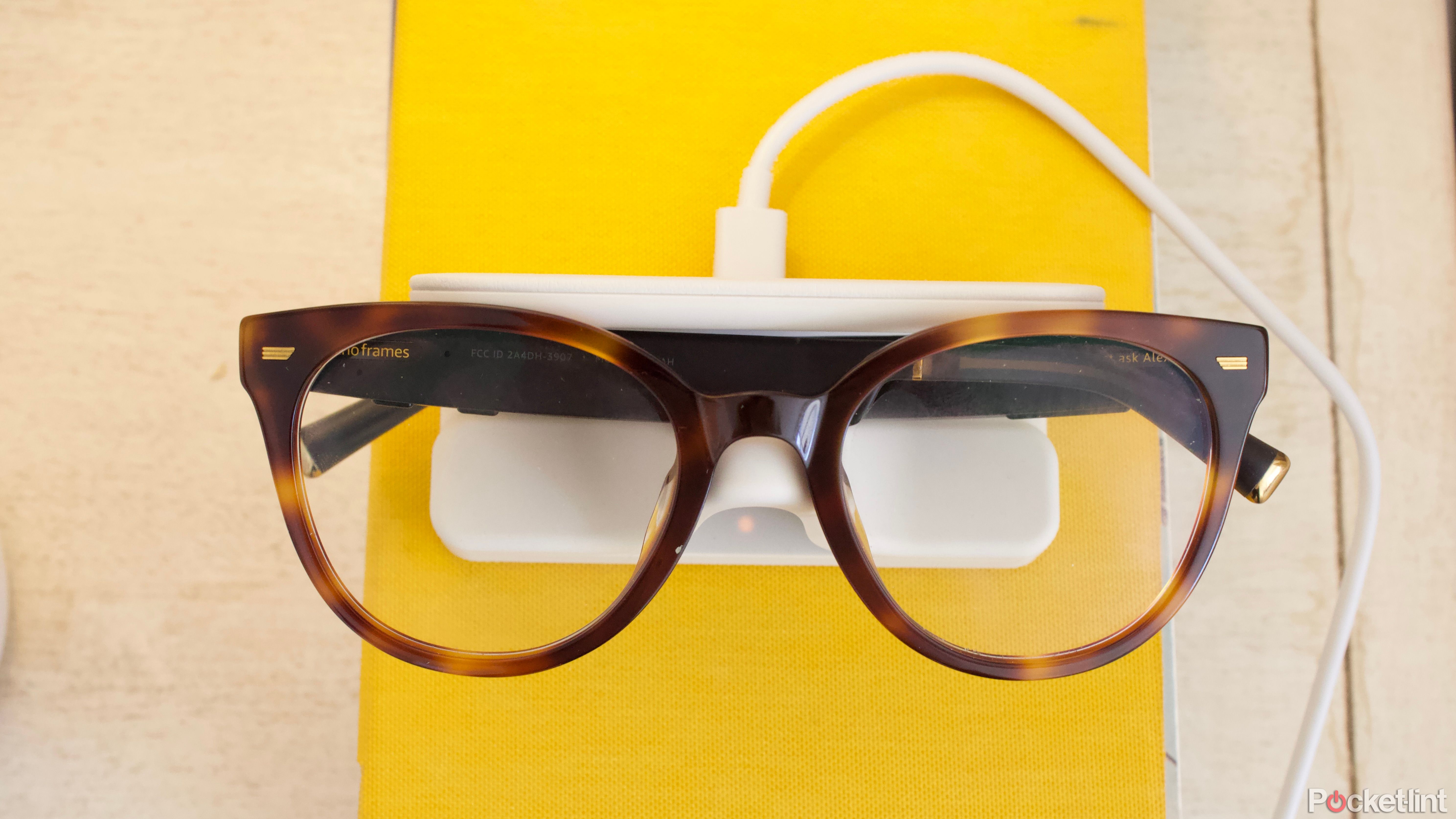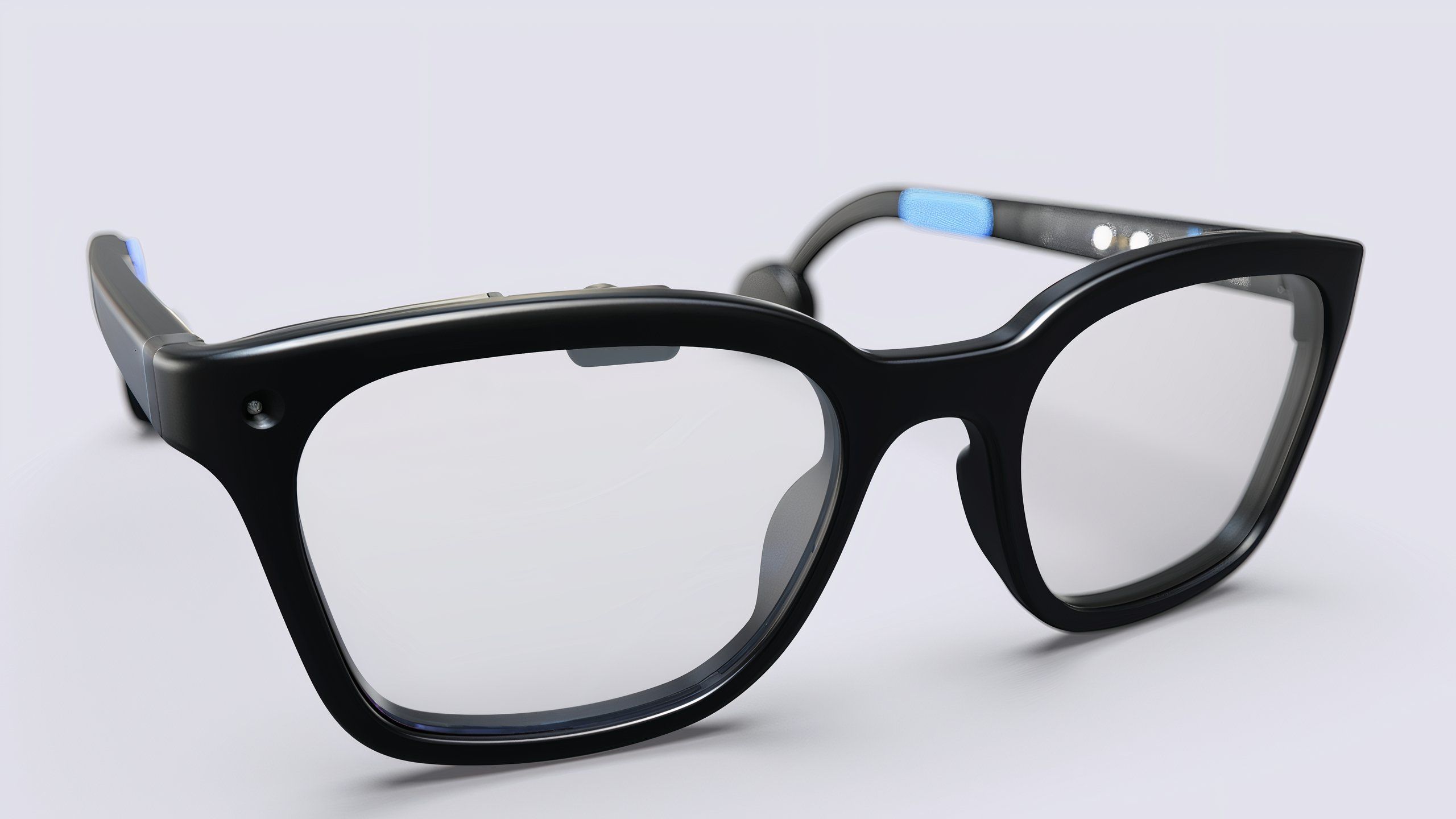Summary
- The Brilliant Labs Halo offers a color display, bone-conduction speakers, and an appealing design for $299.
- The smart glasses have new AI features like the ability to vibe code apps and “agentic memory.”
- Brilliant Labs plans to release the new smart glasses in November 2025.
Nearly every major tech company is barreling towards creating some kind of smart glasses. But you have to look to smaller, newer companies for examples of the truly futuristic vision of heads-up displays and proactive assistants. The Brilliant Labs Frame is a good-looking, albeit developer-focused, pair of smart glasses, with early versions of the built-in display companies like Meta could ship later this year. The company’s next pair of smart glasses that it’s announcing today seems like they’ll offer an even more refined take on the idea.
The $299 Brilliant Labs Halo comes with a color display, bone-conduction speakers, a more palatable design, and big ideas about the future of wearables. That includes everything from the apps they’ll run to how they’ll interface with your day-to-day life. Even with the limited details Brilliant Labs has shared, Halo seems pretty close to the idealized vision some people have for smart glasses.

Related
Best smart glasses: Clear vision and music to your ears
The best smart glasses offer UV and blue light protection along with safe, open-ear listening and even cameras.
Brilliant Labs Halo looks more like traditional glasses
Light, premium, and with a more conventional shape
In comparison to the Frame, which featured round lenses and circular batteries at the end of each temple, the Halo look more like “normal” glasses. Think of the black frames Clark Kent wears or the square acetate frames you can buy from most online eyeglasses retailers, and you have the basic shape. The key differences are the components that make the Halo “smart,” like optical sensors on the front of the frames that can act as rudimentary cameras, a 0.2-inch color microOLED screen that’s projected into your peripheral vision, microphones, bone-conduction speakers (notably missing from the Frame), and similar circular batteries.

- Sunglasses?
-
N/A
- Connective Technology
-
Bluetooth
- Functions
-
AI voice assistant, camera, heads-up display for notifications and apps
- Brand
-
Brilliant Labs
Brilliant Labs’ Halo smart glasses pair a color microOLED display with AI skills that make it able to answer questions and remember things for you.
Inside, Brilliant Labs says Halo uses a B1 chip from Alif Semiconductor for processing various AI and machine learning tasks. Like the Frame, Halo also connects to the company’s Noa app for basic setup and for routing more complex AI requests to the cloud. All together, the glasses are supposed to get around 14 hours of use and only weigh 40 grams, which is heavier than some premium eyeglasses, but a good bit lighter than the Ray-Ban Meta Smart Glasses.
Without trying the Halo, it’s hard to say if all these changes will be positive, though. Adding speakers is a big addition, for example. On the Frame, if you wanted to hear responses from Brilliant Labs’ Noa AI, you had to connect a pair of wireless earbuds. The experience should be much improved with built-in speakers on the Halo. In contrast, the change in display from a gray, prism-based design that hung in your direct field of view on the Frame, to a color microOLED that you have to look up and focus on in Halo, seems like it could be very annoying. Brilliant Labs is obviously trying to appeal to a wider audience with the Halo, but it’s not clear yet whether all the company’s choices are going to payoff.
Brilliant Labs new design shares some similarities with Even Realities G1 glasses, which also feature a display that’s visible in your peripheral vision.
“Vibe Mode” and “Narrative” lean even harder on AI
Halo has a unique approach to apps and memory
In no place are Brilliant Labs’ big swings with Halo more visible than in the software ideas the company is pushing with the glasses. While the built-in features of Frame were limited, Brilliant Labs wants to solve that problem with Halo by making it even easier to create apps. The new glasses support what the company calls “Vibe Mode,” an experimental feature for using Brilliant Labs’ Noa AI for vibe coding apps for Halo. You just prompt Noa in its app or on Brilliant Labs’ website, and it builds an experience you can use on the glasses and easily share with others. The company imagines people remixing these experiences, too, opening up even more options. While it’s a nice sentiment, it does seem like it could be a recipe for some half-baked apps for Halo, at least at launch.
The company’s other big pitch for Halo is the idea of “agentic memory” through a system Brilliant Labs’ calls “Narrative.” Using the glasses’ microphones and optical sensors, Narrative securely captures and processes the things you see and hear throughout the day to build out a personal database of the things you’ve done. Brilliant Labs says this information can personalize Noa’s answers when you talk to it, but also act as a backup memory. If you don’t remember where you left your keys but Noa “saw” it, Narrative’s database can tell you where they are when you ask.
Narrative also relies heavily on Brilliant Labs’ ability to keep the things Halo captures secure.
Again, it’s hard to get excited about the feature without trying it, but it’s definitely a bold idea of how smart glasses could be useful in your everyday life. Narrative also relies heavily on Brilliant Labs’ ability to keep the things Halo captures secure. The company claims that “all rich media required for Noa, including visual and auditory inputs captured by Halo, are immediately converted into an irreversible mathematical representation.” Nothing is stored, and no third party is able to view your data. Whether that’s true in practice will require reviewers and security researchers to test.
Halo pricing and availability
Brilliant Labs’ new smart glasses will be available soon
If you’re interested in trying Halo for yourself, the glasses will be available in Matte Black starting at $299 and will ship in November 2025. You’ll be able to order them direct from Brilliant Labs, and they’ll also be available to purchase from SmartBuyGlasses.com with a variety of different prescription lenses.
If you’re curious about Brilliant Labs original smart glasses, you can read Pocket-lint’s report on the Frame and the Brilliant Labs Frame review. If you’re curious about a smart glasses experience from a more established company, you might also be interested in the Meta Ray-Ban Smart Glasses, which do less, but have the backing of Meta and deep connections with apps like Instagram.










